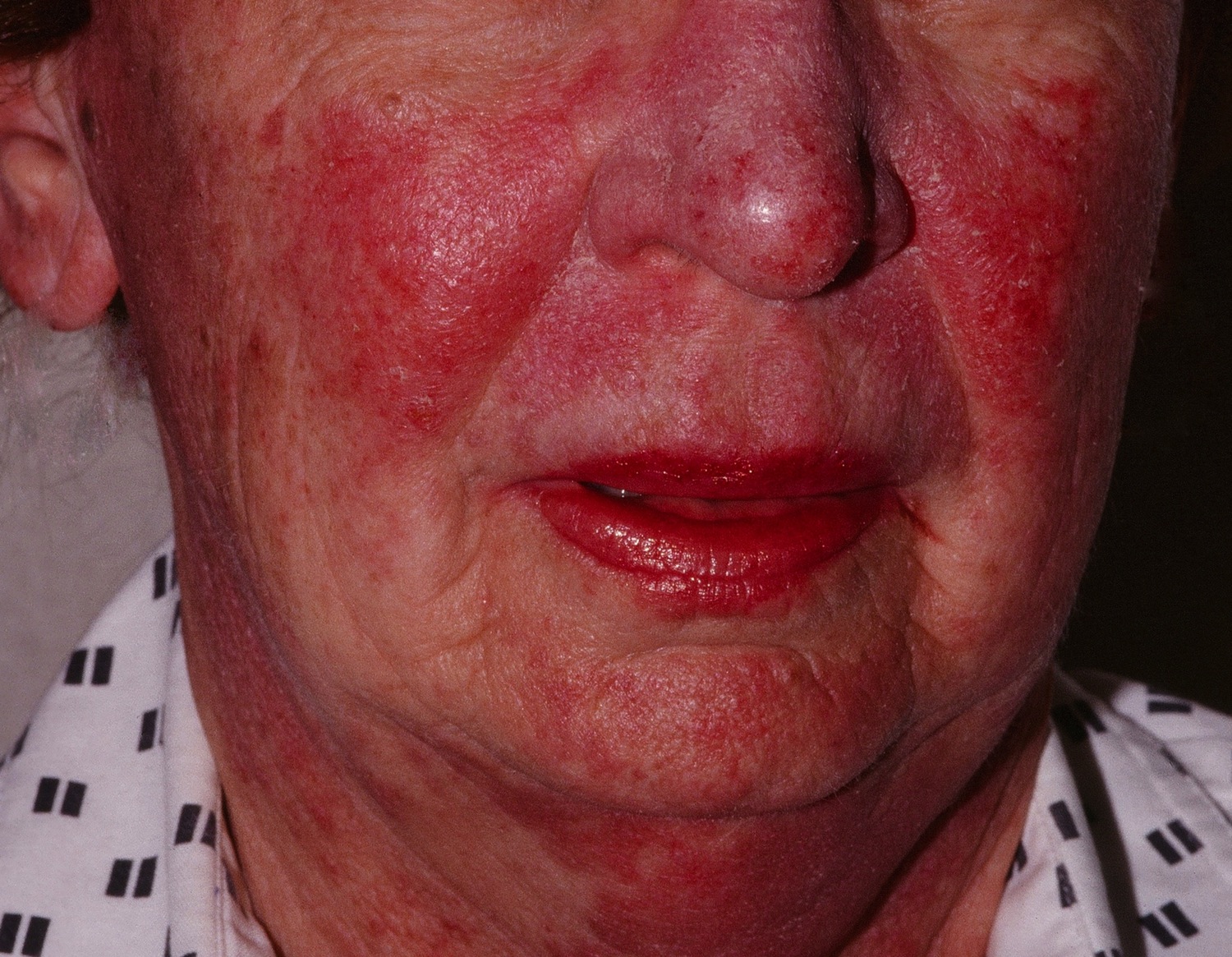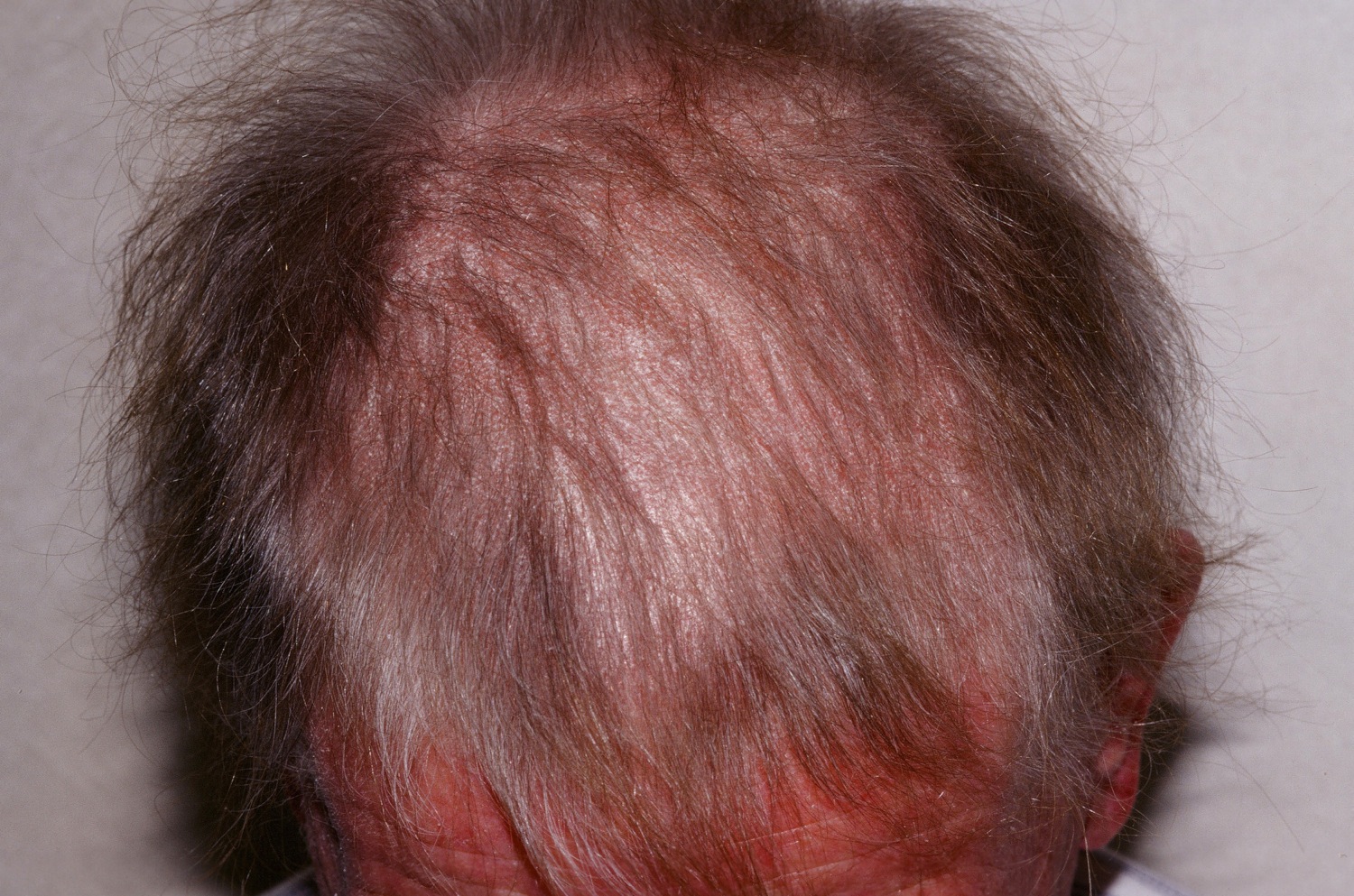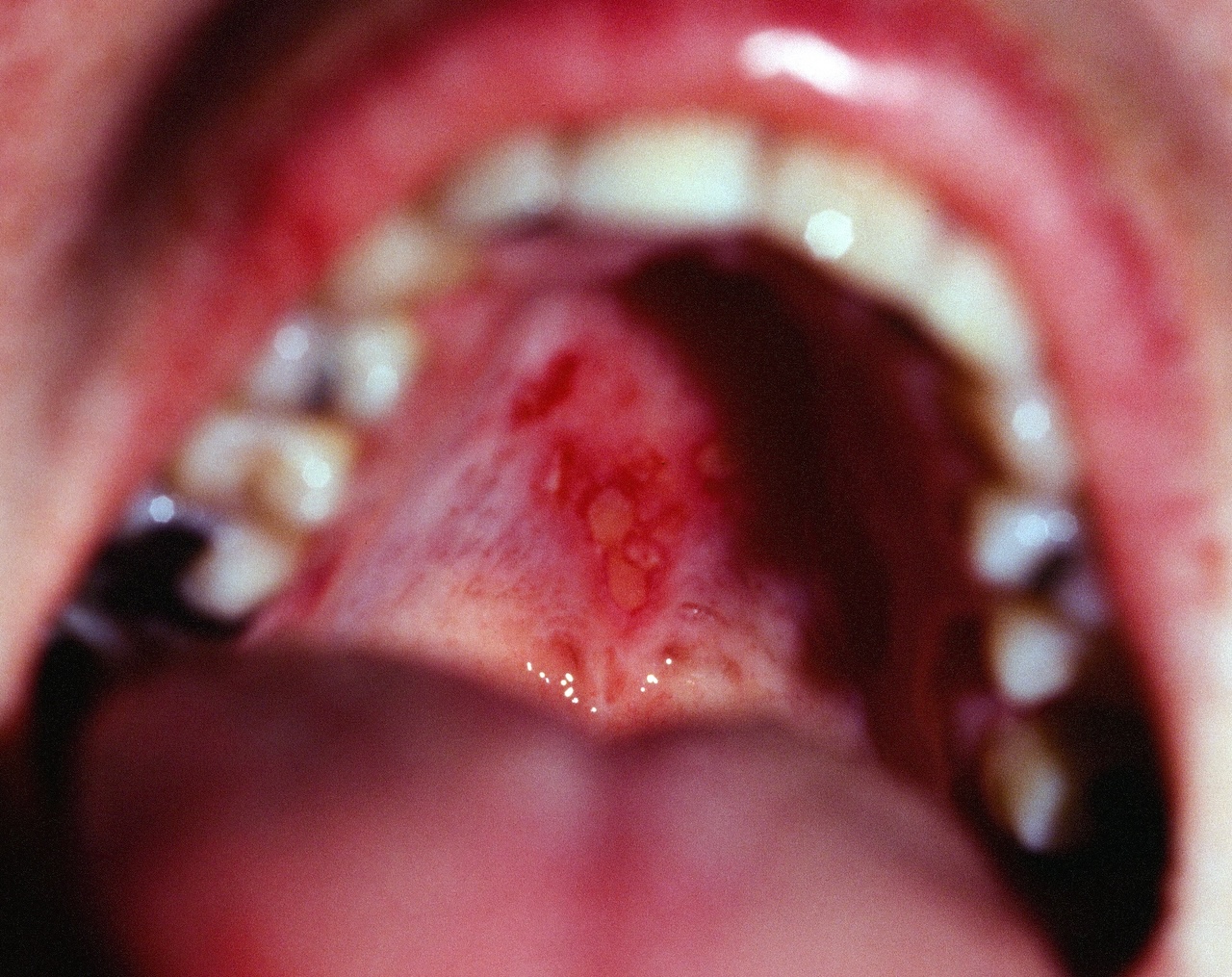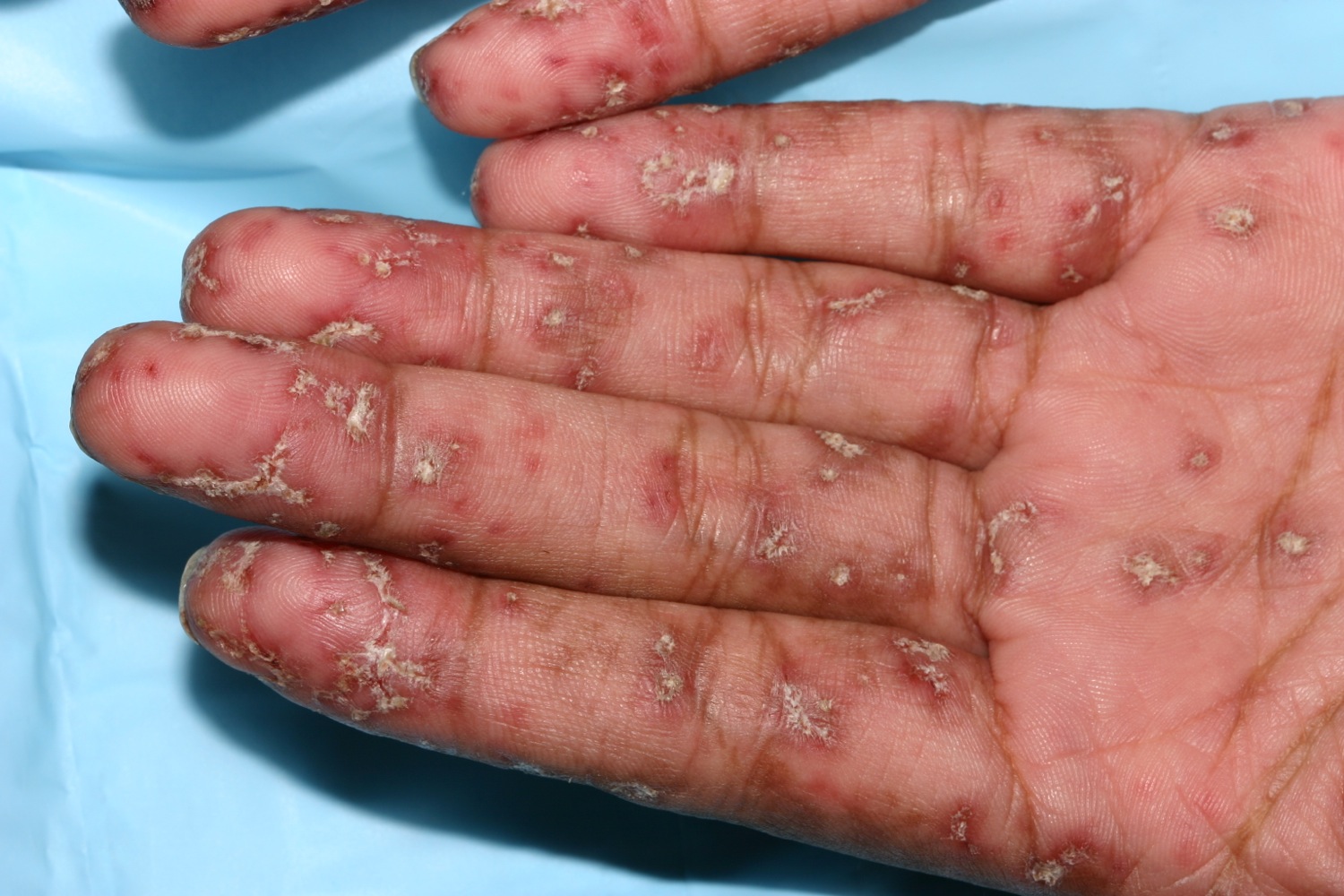
The typical butterfly rash of Lupus in an older woman. Here ANA was postive with a titer of 1:1320. Her Ro antibody was also positive.

The typical butterfly rash of Lupus in an older woman. Here ANA was postive with a titer of 1:1320. Her Ro antibody was also positive.
Systemic Lupus Erythematosis (SLE) is a multi-system autoimmune disease characterized by the presence of antinuclear antibodies (ANA). Fever, photo-induced skin changes and arthritis are common. The ANA is usually positive--often with a positive anti-dsDNA.
Black patients, women, and especially younger black women are particularly at risk. Women outnumber men about 8:1. When SLE develops in a young child, one should exclude C1q deficiency.
Bilateral erythema of the cheeks and malar eminences (butterfly rash) or a more extensive photodistributed rash may be seen in systemic lupus erythematosus. The following findings are characteristic: Raynaud's phenomenon, photosensitivity, mucous membrane lesions, butterfly poikiloderma, urticaria, alopecia (both scarring and non-scarring types), chronic discoid lesions, chilblains, and vasculitis.
Hair loss is one if the features of SLE. It may be scarring as in DLE or non scarring.
Rosacea can occasionally present with centrofacial erythema mimicking lupus.

Alopecia is a common clinical manifestation of SLE, with an incidence rate ranging from 17.3% to 85.2% depending upon the study. It can occur in various forms, including diffuse thinning as shown here (in a patient with subacute cutaneous lupus), patchy loss, and lupus hair (short, fragile hairs at the hairline).

Oral ulceration, including mouth sores, occurs in a significant portion of individuals with systemic lupus erythematosus (SLE). Studies indicate that around 30% to 40% of SLE patients experience oral ulcerations. These ulcers can appear during lupus flares or be associated with medications used to treat the disease

A teenage girl with systemic lupus and a diffuse rash that included red, keratotic papules and plaques diffusely on the hands.
Homepage | Who is Dr. White? | Privacy Policy | FAQs | Use of Images | Contact Dr. White